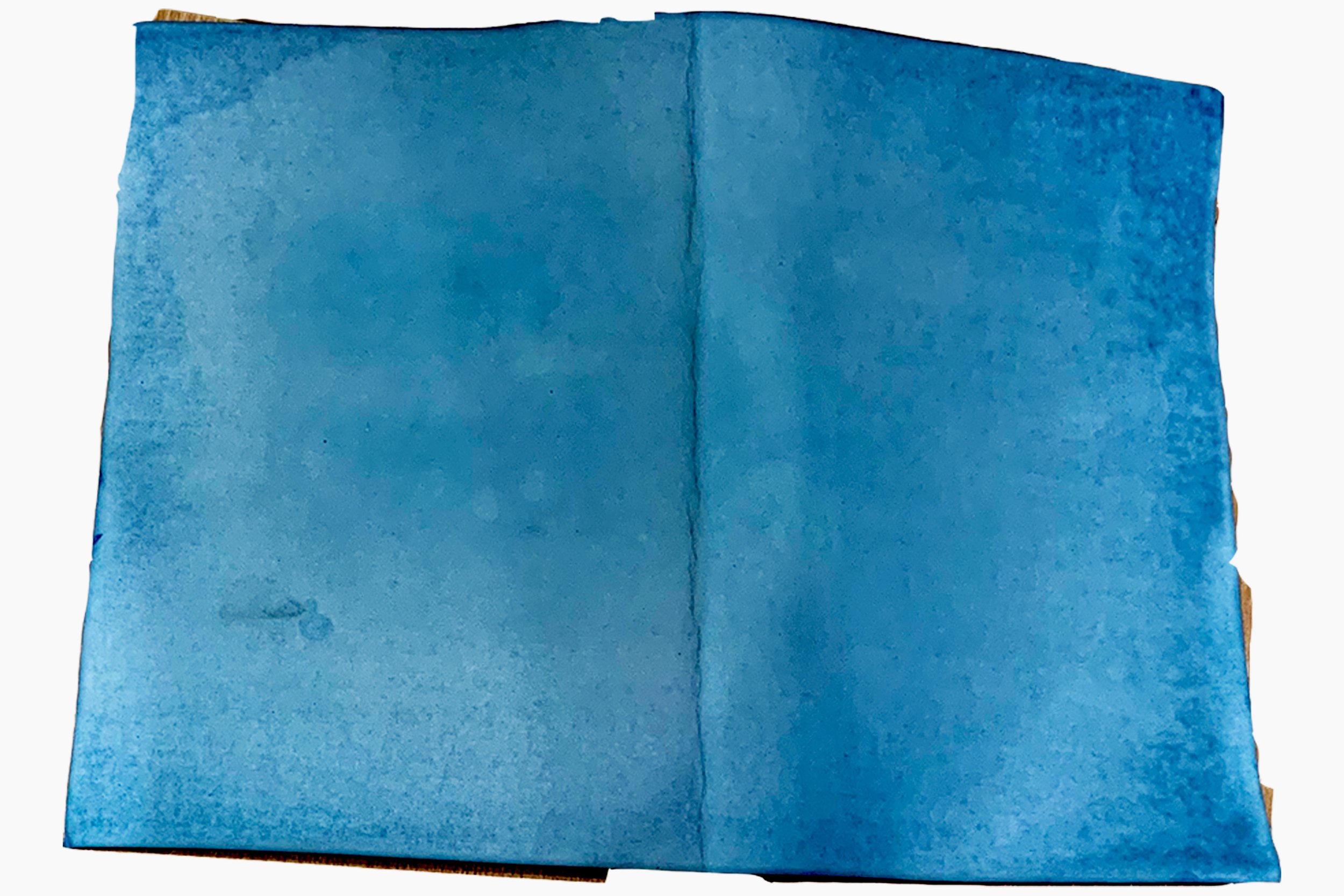
Para-Portrait
Dev Studio 1 | Tim Durfee | Media Design Practices
Systems Prototype
Tools: Potassium Ferricyanide, Ferric Ammonium Citrate, Paper, Water, UV light (sunlight)
Role: self-directed
Create a self-portrait using a randomly assigned mode of photography. The mode of photography I was assigned was the photogram (chemical) / cyanotype (chemical).


Prompt:
Carefully research how the cyanotype process creates images that is unique from the other photography process - optically, mechanically, chemically, and/or digitally.
Experiment with this tool, focusing on the qualities, glitches, capabilities specifically related to its design.
As particular qualities emerge from this research, continue your experimentation to develop your own techniques that reveal or expose (or mis-use, or exploit, or amplify) the inherent nature of your tool.
Process:
The cyanotype process is placing stencils, acetate, or objects on a photo-sensitive paper and exposing it to UV light; in this case, sunlight. These objects make negative shadow images that show variations in tone depending on the transparency of the objects.
The part of the paper exposed to light = light blue.
The part of the paper not exposed to light = white.
The more transparent the object the lighter the output, and the more opaque the darker the output.
Opaque objects directly touching the paper create a harsh dark-to-light contrast (blue-to-white).
After researching different cyanotype making Dadaists and Bauhaus artists partook, I was inspired to iterate with changes in object opacity, relational closeness to the paper, object and body parts moving during exposure, and direction toward the sun.














